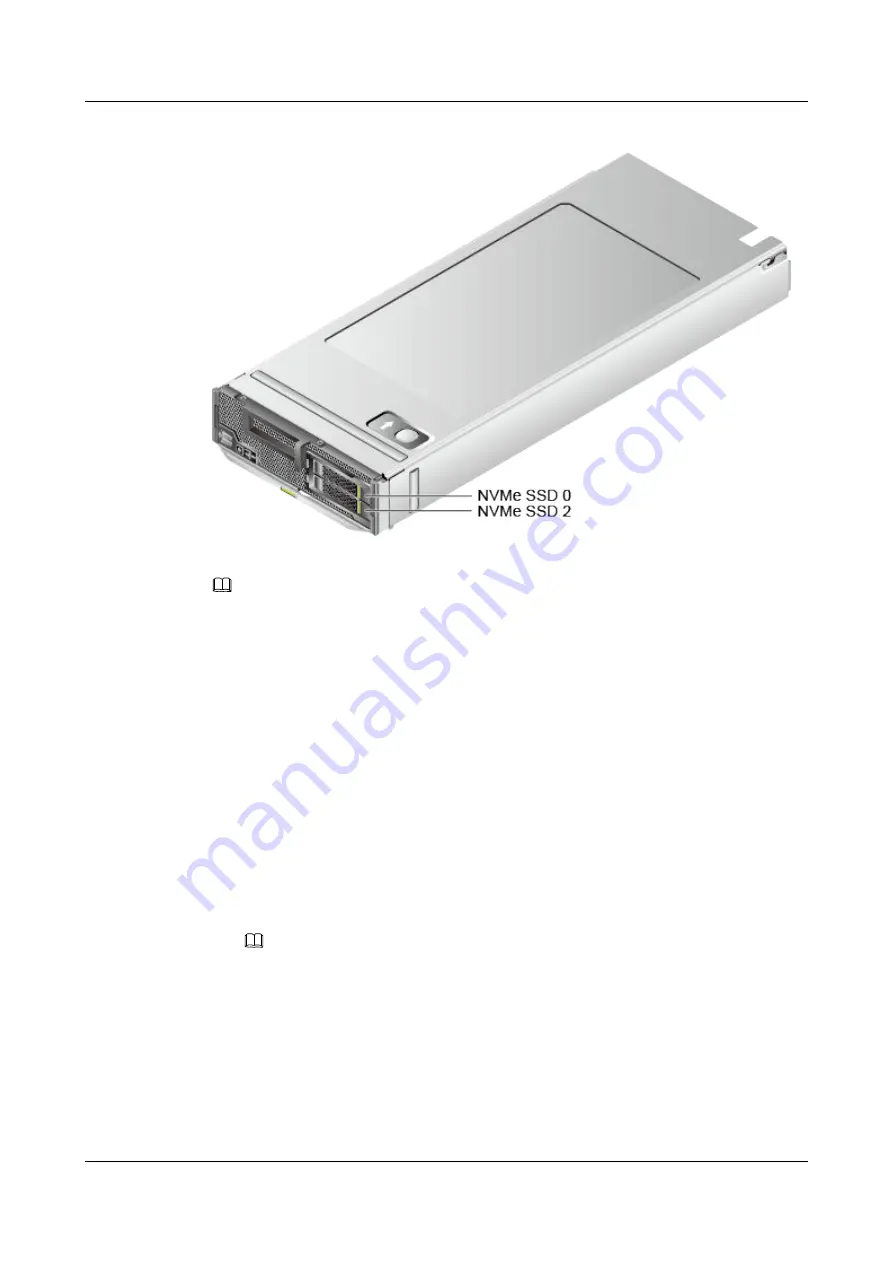
Figure 3-49
Positions of drives
Step 3
Remove the drive filler.
NOTE
Perform this operation only when a drive filler is installed.
Step 4
Install the driver for NVMe drives.
l
Install drivers for Intel series NVMe drives.
To ensure the stable running of NVMe drives, the following OSs are supported:
–
The NVMe driver of the latest version must be installed for the Windows operating
system. For details about how to install the driver on the Windows OS, see
Intel
NVMe Install Guide_330547-003.pdf
obtained after the driver package is
decompressed.
–
For Linux, you are advised to use Linux versions listed on the compatibility list.
Certain Linux OSs do not support the NVMe feature. You need to download the
NVMe driver from the official Intel website for such Linux OSs. For details about
how to install the driver on the Linux OS, see
Intel_Linux_NVMe_Guide_330602-002.pdf
obtained after the driver package is
decompressed.
https://downloadcenter.intel.com/download/28718?v=t
NOTE
–
Download the NVMe driver of the latest version.
–
If no such driver is available, use the latest drive driver provided by the OS.
l
Install drivers for Huawei series NVMe drives.
To ensure the stable running of NVMe drives, the following OSs are supported:
–
The NVMe driver of the latest version must be installed for the Windows operating
system.
–
Install the driver of the ES3000 V5 for a Linux OS. To enable hot swap, upgrade
the OS kernel.
FusionServer Pro CH121 V5 Compute Node
Maintenance and Service Guide
3 Basic Operations
Issue 06 (2019-08-10)
Copyright © Huawei Technologies Co., Ltd.
47






























